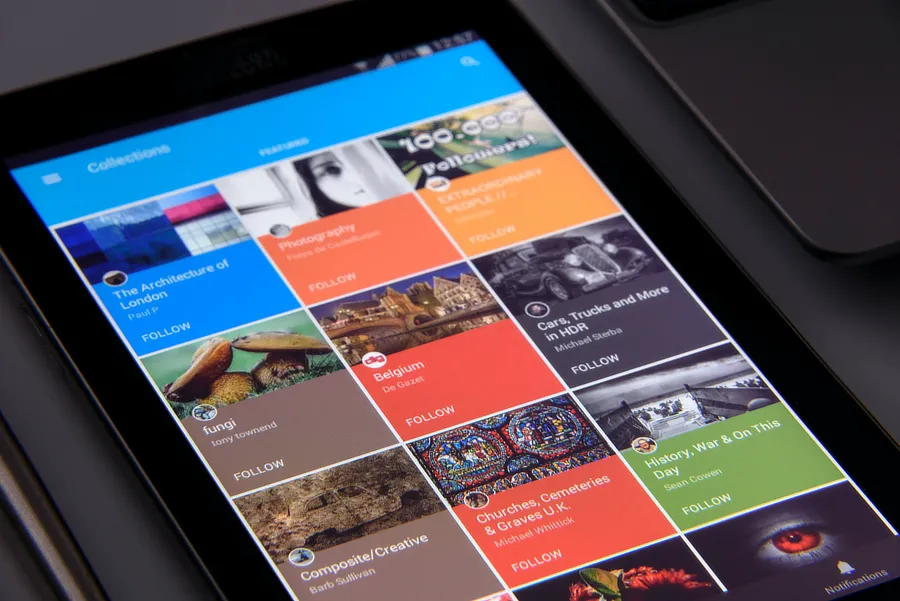In today's digital age, mobile app development has become an essential aspect of our lives. With the constant evolution of technology, it is crucial for professionals in this field to stay updated with the latest trends and advancements. This article delves into the ever-changing landscape of mobile app development from a professional perspective.
We will explore how this industry has grown over time, examining the challenges faced by developers and the innovative solutions they have devised. By understanding the evolutionary path of mobile app development, we can gain insight into its future potential and impact on various industries. Join us as we embark upon an exploration that promises to be both enlightening and thought-provoking.

The Emergence of Mobile App Development: From Basic Functionality to User-Centric Experiences
As mobile technology advanced, so did the development of mobile applications. Initially, basic functionality was the primary goal for app developers. They aimed to provide users with essential features and functions on their devices. However, as smartphones became more prevalent and powerful, a shift occurred towards creating user-centric experiences.
Developers now prioritize designing apps that engage users on a deeper level. They focus on intuitive interfaces, seamless navigation, and visually appealing designs to enhance the user experience. This means incorporating gestures like swiping or pinching for actions, simplifying complex tasks into streamlined workflows, and ensuring responsive performance across different devices.
To achieve these user-centered experiences, app developers utilize various techniques such as prototyping and usability testing. Before launching an app, prototypes allow them to gather feedback from potential users and make necessary adjustments. Usability testing ensures that the final product meets the needs and expectations of its target audience.
In summary, mobile app development has evolved from solely providing basic functionality to delivering captivating user-centric experiences through intuitive interfaces and seamless navigation. This shift is driven by advances in technology and an increased focus on usability testing during the development process. As smartphones continue to dominate the digital landscape, it is crucial for developers to prioritize user satisfaction in order to thrive in this competitive market.

The Rise of Cross-Platform Development: Bridging the Gap between iOS and Android
Cross-platform development has emerged as a game-changer in mobile app development, bringing efficiency and versatility to the industry. It allows developers to build apps that can run smoothly on both iOS and Android platforms without duplicating efforts.
Efficiency: With cross-platform development, developers no longer need to code separate versions for each platform, saving time and resources. By using shared codebases and frameworks like React Native or Xamarin, they can write once and deploy everywhere, greatly streamlining the development process.
Versatility: In today's market where users switch between different devices regularly, cross-platform apps offer unmatched adaptability by seamlessly working across various platforms. This flexibility not only broadens the user base but also ensures consistent functionality regardless of whether users are on an iPhone or an Android device.
Cost-effectiveness: Developing for multiple platforms simultaneously can be expensive; however, with cross-platform development tools available today, businesses can significantly reduce their investment by leveraging reusable assets across different ecosystems.
As cross-platform technology continues to evolve rapidly, it is undoubtedly shaping the future of mobile app development - making it more efficient, versatile, and cost-effective than ever before.

The Impact of User Interface Design: From Clunky to Seamless and Intuitive
User interface design plays a crucial role in the success of mobile apps. Initially, app interfaces were clunky and unintuitive, leading to frustrating user experiences. However, as mobile app development has evolved over time, so too has the importance placed on creating seamless and intuitive interfaces.
Improved Usability
With advancements in user interface design techniques, developers are now able to create apps that are much more user-friendly. Clear navigation menus, well-organized layouts, and easily recognizable icons all contribute to improved usability. By focusing on making their apps intuitive and easy-to-use from the start, developers can reduce training requirements for new users while also increasing customer satisfaction.
Enhanced Efficiency
A well-designed user interface can greatly enhance efficiency within an app. Through careful selection of colors, fonts, and button sizes - along with strategic placement of important features - developers can ensure that users can quickly access the information or actions they need most frequently. This not only saves users' time but also increases productivity overall.
Overall, user interface design is instrumental in shaping the experience that people have when using mobile apps. With its evolution over time, this aspect of app development has undergone significant improvements. From cumbersome initial designs, the focus has shifted towards creating seamlessly functioning interfaces.
These developments have led to enhanced usability by establishing straightforward navigation menus, and clear-cut layouts; additionally, relevant standards today incorporate easier comprehension between getting started with new software than previously. Within such recent technical innovations, further opportunities arise toward improving operational efficacy.
Visual indicators like color palettes, positional arrangements, & aspects inclusive display structure place certain components where some may require ease-of-access, right up front. A splendid artifact bestows a combination between short response times, & optimized performance. Page lengths aren't extended unnecessarily &, information isn't transferred through applications unknown interconnections.
Essentially, every end-user benefit achieved manifests into greater resourcefulness throughout every specific interaction. Since any drawback compromises business productivity, success to publish any mobile app will depend on making every single operation as efficient as developers could possibly achieve.

The Role of Artificial Intelligence and Machine Learning in App Development: Enhancing Personalization
Artificial intelligence (AI) and machine learning (ML) have transformed the landscape of mobile app development, enabling developers to create personalized and efficient applications. AI algorithms analyze large datasets and learn from patterns, allowing apps to understand user preferences better. Through this understanding, apps can offer personalized recommendations and suggestions based on individual user behavior.
ML plays a crucial role in enhancing efficiency in app development by automating tasks that were previously time-consuming for developers. This automation includes tasks like coding, testing, bug fixing, and optimizing backend systems. With ML-powered tools at their disposal, developers can streamline the development process significantly, saving time and resources.
In conclusion, AI and ML have revolutionized mobile app development by bringing personalization to users' fingertips while increasing efficiency for developers. These technologies continue to evolve rapidly as more advancements are made in the field of artificial intelligence. As we move forward into a future where digital experiences become even more integral to our lives, harnessing the power of AI will be crucial for creating innovative apps that cater to individual needs efficiently.

The Evolution of App Monetization Strategies: From Paid Downloads to In-App Purchases and Subscription
The Evolution of App Monetization Strategies
App monetization strategies have significantly evolved over the years, moving away from traditional paid downloads to more lucrative methods like in-app purchases and subscription models. This shift has been driven by changes in user behavior, market dynamics, and advancements in technology.
From Paid Downloads to In-App Purchases
In the early days of mobile apps, developers relied on a simple yet straightforward monetization strategy - charging users upfront for downloading their app. However, as competition grew and consumers became hesitant to pay before trying an application, this model started losing its effectiveness. As a result, developers began exploring alternative approaches to ensure sustainable revenue streams.
The introduction of in-app purchases proved to be a game-changer for app monetization. Instead of demanding payment upfront, developers gave users access to basic features for free while offering premium content or additional functionalities through in-app purchases. This approach allowed users to test out an app's core functionality before deciding whether they wanted further enhancements through cost-effective microtransactions.
Subscription Models - A Lucrative Paradise
Driven by the success of streaming platforms like Netflix and Spotify using subscription-based business models transformed how many app developers approached monetizing their products after penetrating deeper into both B2B (Business-to-Business) and B2C (Business-to-Consumer) sectors.
Subscription models brought forth several advantages: recurring revenue streams provided financial stability which helped develop long-term relationships with customers; regular updates improved customer experience; data-driven insights enabled personalization resulting overall better retention rates fostering profitability.
With diverse options available ranging from all-access memberships providing unlimited usage benefits across various platform products / apps / service / packages / modals / suites — leading software providers are adopting subscription pricing plans ensuring returning / recurring profits while tapping new grounds / users / customers / subscribers simultaneously.

The Future of Mobile App Development: Predictions and Trends to Watch Out For
Predictions and Trends for Mobile App Development:
Rise of Artificial Intelligence (AI) in Apps
AI will play a significant role in the future of mobile app development. With advances in machine learning algorithms, AI-powered apps will become more prevalent. These apps will offer personalized experiences by understanding user preferences and behavior patterns. They will be able to anticipate user needs and provide proactive recommendations.
Internet of Things (IoT) Integration into Mobile Apps
As IoT devices continue to grow in popularity, integrating them with mobile apps will become essential. Mobile app developers will need to create applications that can seamlessly connect with smart devices such as wearables, home automation systems, and connected vehicles. This integration will enable users to control their IoT devices directly from their smartphones, making life more convenient.
Progressive Web Apps (PWAs)
Progressive web apps are websites that function like native mobile applications. By leveraging web technologies such as HTML5 and CSS3, PWAs bring the best of both worlds - the reachability of a website and the functionality of a mobile app. In the coming years, we can expect an increase in PWAs as they eliminate the need for separate development efforts for different platforms like iOS or Android.
Choose a Collaboration Model
Choosing the right collaboration model is crucial in the mobile application development process, especially when aiming to create a custom mobile app. Whether you're interested in developing an iOS app or an Android app, understanding the app development cost is essential. Hiring an app development agency or a dedicated development team can help streamline your development project, ensuring that your app design aligns with your app idea and meets the needs of your target audience.
To build a successful mobile app that will perform well in the app store, you should consider various development services offered by app development companies. The choice between native app, hybrid app, or web application will significantly impact both the development costs and the mobile app development process. It's important to hire the right app developers for hire who can effectively address your needs, ensuring the app is user-friendly and performs optimally on any mobile device.
It Needs a Human Touch, Mobile Device Development
In the fast-paced world of mobile application development, the human touch is essential to ensure that the final product resonates with users. While many app development companies focus on the technical aspects, such as iOS app development or android app creation, it is the app design and user experience that truly make a difference. A development team must understand the app idea and target audience to create an app that stands out in crowded app stores. Whether developing a native app or a hybrid app, the app development cost must align with the value delivered to users.
When considering how much it costs to develop a mobile app, businesses should factor in development services and the complexity of the development project. Engaging with experienced UK app developers can streamline the mobile development process, providing insights into the best practices for web and mobile app development. Ultimately, investing in quality mobile app development services can lead to the creation of the best mobile app that effectively meets user needs while optimizing development costs.
Studio Liddell, UK App Developer, Let us help you.
At Studio Liddell, we specialize in mobile application development, offering a comprehensive range of development services tailored to meet your needs. Whether you're looking to create an app for iOS or Android, our team of expert UK app developers can guide you through the mobile app development process. We understand that the app development cost is a crucial factor, and we provide transparent estimates to help you plan your development project effectively. From native apps to hybrid apps and even web applications, we have the expertise to develop the best mobile app for your business.
Our app development agency prides itself on delivering high-quality app design and functionality, ensuring that your mobile device users have an exceptional experience. If you have a unique app idea or a complex type of app in mind, our development team is here to help you develop a mobile app that stands out in the app store. We also offer game development services and can assist you in hiring app developers for hire to bring your vision to life. Contact us today to learn more about how we can help you build an app that meets your business goals and exceeds user expectations.
Related Pages
Need app development call us today!
We are a team of experienced app developers based in Manchester UK, but we work with clients all over the world.
Call now +44 (0) 7798 834 159

